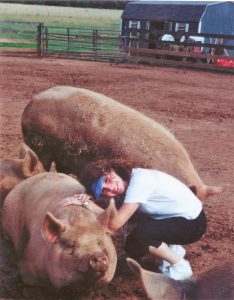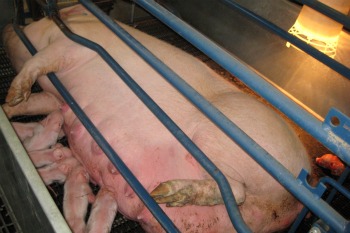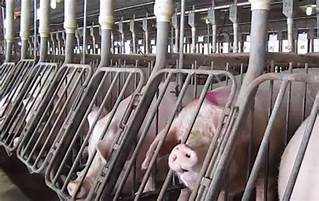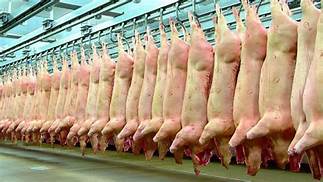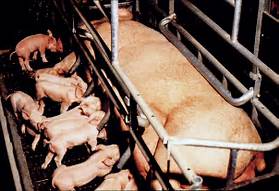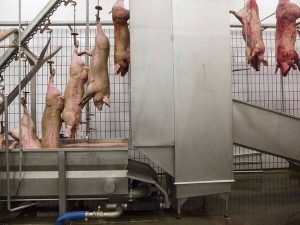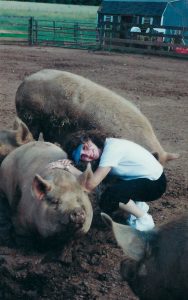 More information on COVID-19 and pandemics you may not know:
More information on COVID-19 and pandemics you may not know:
It’s easy for those of us in the Western world to shake our heads at the gruesome wildlife (wet) markets in China that are the cause of the COVID-19 pandemic now paralyzing the globe. But what’s more difficult is to be honest with ourselves about what kinds of pandemics may be brewing through our own practice of eating animals.
And while the new coronavirus, crippling as it is, might have a fatality rate (proportion of those infected who die) greater than four percent, this catastrophe may be just a dress rehearsal for an even more serious pandemic that could take a more gruesome toll, akin to the 1918 global flu pandemic, which originated in a Kansas slaughterhouse and killed 50 million people.
When that day comes, it’s very likely that such a virus will also have its origin in humanity’s seemingly insatiable desire to eat animals, wild or domestic. The atrocious conditions in which we raise animals today – crowding tens of thousands of animals wing-to-wing or snout-to-snout – serve as amplifiers for viral pandemics.
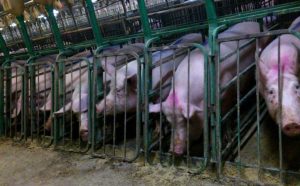 Indeed, the H1N1 swine flu outbreak of 2009 originated in a pig confinement operation in North Carolina. Factory farms like this cut pigs’ tails off without any anesthesia; thousands slowly die from blood loss. The pigs are stuffed into crates so small they can’t even turn around. Many die from thirst during transport in trucks packed so tightly that those who collapse or die are trampled by others who, in desperation, frantically seek escape.
Indeed, the H1N1 swine flu outbreak of 2009 originated in a pig confinement operation in North Carolina. Factory farms like this cut pigs’ tails off without any anesthesia; thousands slowly die from blood loss. The pigs are stuffed into crates so small they can’t even turn around. Many die from thirst during transport in trucks packed so tightly that those who collapse or die are trampled by others who, in desperation, frantically seek escape.
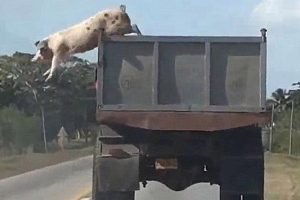 And while the H5N1 bird flu outbreak in 1997 (case fatality rate: 60 percent) originated in a Chinese chicken factory farm, a similar bird flu in the U.S. just five years ago led American chicken farmers to kill tens of millions of their birds to contain the outbreak. And at this very moment, both India and China have announced bird flu outbreaks originating in chicken factories.
And while the H5N1 bird flu outbreak in 1997 (case fatality rate: 60 percent) originated in a Chinese chicken factory farm, a similar bird flu in the U.S. just five years ago led American chicken farmers to kill tens of millions of their birds to contain the outbreak. And at this very moment, both India and China have announced bird flu outbreaks originating in chicken factories.
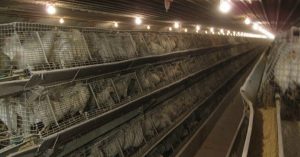 Chickens, like pigs, are tortured in factory farms, crammed so tightly into cages they peck at each other in despair and madness. To combat this, factory farmers mutilate the chickens with a machine that holds them by the head and slices off their beaks with a hot metal blade. As often as not, the blade cuts too close and millions of chickens starve to death.
Chickens, like pigs, are tortured in factory farms, crammed so tightly into cages they peck at each other in despair and madness. To combat this, factory farmers mutilate the chickens with a machine that holds them by the head and slices off their beaks with a hot metal blade. As often as not, the blade cuts too close and millions of chickens starve to death.
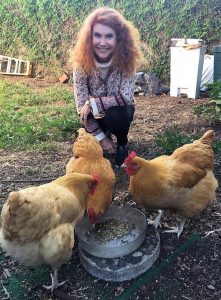 A 2007 editorial in the American Journal of Public Health on the topic worried that our mass raising and slaughtering of animals for food could be the genesis of the next big global pandemic. Given the connection between industrial animal agriculture and pandemic risk, the editorial observed, “We need to change the way humans treat animals – most basically ceasing to eat them.”
A 2007 editorial in the American Journal of Public Health on the topic worried that our mass raising and slaughtering of animals for food could be the genesis of the next big global pandemic. Given the connection between industrial animal agriculture and pandemic risk, the editorial observed, “We need to change the way humans treat animals – most basically ceasing to eat them.”
Such a prescription in 2007 might have seemed off the radar as it would have appeared simply too unrealistic. Today, however, technological progress has made it easier to imagine taking the public health experts’ advice more seriously.
Yes, we humans may crave meat, but our concept of “meat” is now becoming far more diverse than in the past. Whereas “protein” was once synonymous with a hunk of flesh from a once-living animal’s body, today many Americans are embracing a type of plant protein that mimics the taste of flesh. There’s the success of plant-based meat alternatives, for example, which are now a popular part of fast food chains’ menus across the country. Many forward-thinking meat companies have even released their own plant-based meat alternative offerings, too. Today’s plant-based meats have all the taste and texture of anything you can find in animal form. You like burgers, sausages, chicken nuggets? There is an almost endless variety of delicious and easy to find meatless product out there. There are plenty of dairy and cheese alternatives too. Looking for something to do while you’re at home? Check them out and find the ones you like the best. You can also purchase through Amazon any number of vegan recipe books.
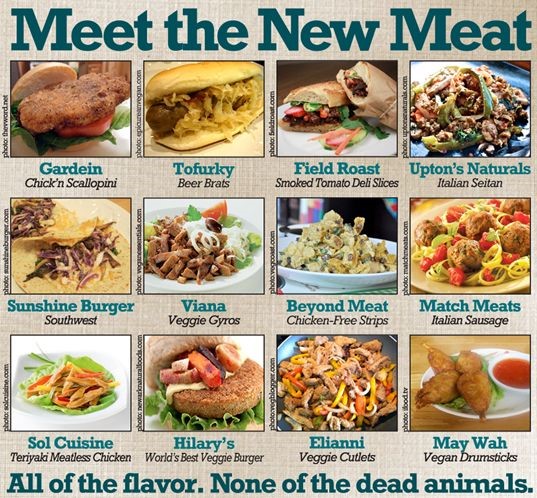 Whether the concern is climate change, antibiotic resistance, deforestation, animal welfare, or more, the benefits of leaving off the eating of animals and getting our protein source from a plant-based diet, is imperative.
Whether the concern is climate change, antibiotic resistance, deforestation, animal welfare, or more, the benefits of leaving off the eating of animals and getting our protein source from a plant-based diet, is imperative.
As we hunker down and weather the corona storm now hitting the world, let us take some of our downtime to contemplate that we have the power to reduce the chance of the next pandemic. Wet markets in Asia and elsewhere MUST be shut down, but let’s not stop there. If we have the will to shut down our entire society for weeks on end, surely we have the will to change our diets.
No one NEEDS to eat animals, and together we can “do no harm” to our animal friends and stop inflicting deadly pandemics on ourselves.
Peace to ALL the animals with whom we share this planet.

